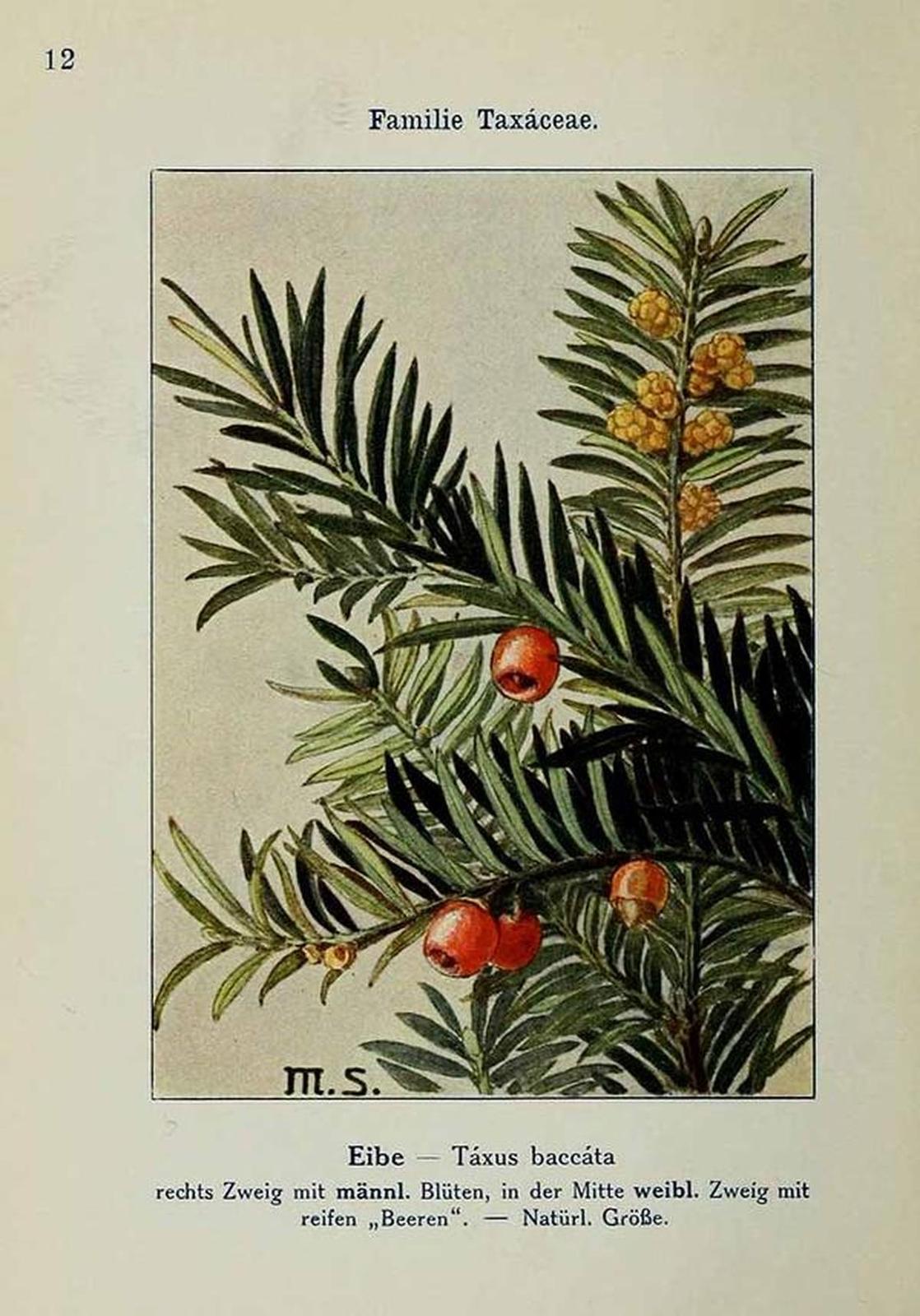Taxus baccata L.
TaxaceaePuede alcanzar una longevidad de hasta 1.000 años, y en estado natural vive sobrepasando los 1.600 metros de altura. El denominación deriva de su nombre en latín, empleado por Virgilio y Plinio, tomado del griego taxis, orden, tal vez en alusión a la disposición en filas de sus hojas. Su nombre genérico hace alusión al carácter tóxico de esta planta: todas las partes del árbol, excepto la envuelta exterior de la semilla, contienen taxina que altera el funcionamiento del sistema nervioso, de hecho, San Isidoro de Sevilla, en el siglo VII, señala el uso de estas semillas en la Península Ibérica, por parte de los antiguos cántabros, astures y pobladores de Galicia, como veneno para suicidarse cuando se encontraban sitiados por el enemigo o presos de éste. Los pueblos celtas veneraron al tejo como árbol sagrado, probablemente debido a la extraordinaria longevidad de la planta, que la hace parecer inmortal. Por esta misma razón, en España han sido plantado profusamente en la Cornisa Cantábrica al abrigo de ermitas, iglesias y cementerios desde tiempos remotos, como símbolo de la trascendencia de la muerte. Precisamente por su longevidad también es habitual utilizarlo como marca fronteriza o lugar de reunión, siendo fácil encontrarlo en las plazas de los pueblos bajo el cual se realizaba el concejo abierto.
Procedencia
Europeo/MediterráneoCalendario
Hábitat
Morfología
 Árbol
Árbol
 Cónica
Cónica
 Simple
Simple
 Acicular
Acicular
 Lineal
Lineal
 Otras disposiciones
Otras disposiciones
 Entero
Entero
 Cuneada
Cuneada
 Agudo
Agudo
 Perenne
Perenne
